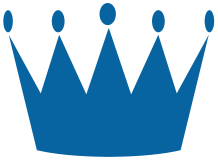Clean Language in the Classroom by Julie McCracken introduces teachers to an innovative, yet simple, approach to supporting learning. Using modelling and questioning techniques, Clean Language seeks to minimise miscommunication and misconceptions and create deep, personalised learning experiences for each child. It helps both teacher and learners think about their own thinking and learning. This child-centred approach means the teacher is supporting and facilitating, rather than leading the learning, which also builds a supportive learning culture across whole classes. It encourages children, teachers and parents to respect others and their needs.
Clean Language is founded on listening and a particular kind of questioning. Clean questions are formed by taking a person’s words and blending them with a neutral question, which has been designed so as not to assume or elicit the answer. Written by Julie McCracken, a real teacher with extensive experience of using these approaches with her classes, this book provides a comprehensive guide to using Clean Language techniques in the classroom. It gives teachers the tools to use Clean Language in their classrooms, including detailed step-by-step instructions, effective questioning and modelling techniques, and case studies.
The benefits of the clean approach include: improved communication; improved attainment; a supportive, collaborative classroom culture; and self-motivated, independent, reflective learners. Clean Language raises awareness of one’s own thought processes and those of others. Clean Language can facilitate learning by helping individuals to explore their own mindsets, learning needs and metacognitive processes. It can also encourage respect, diversity and inclusive practice by helping classes to understand each other’s learning needs.
The book details how to incorporate Clean Language into curriculum areas such as speaking and listening, writing, reading, PE, art, maths, science and domains such as thinking skills, behaviour management, confidence, SEN, collaborative classroom culture and test performance. The examples used in the book come mainly from a primary context, but the content is applicable to secondary settings as well. It is written primarily with classroom teachers in mind, but will also appeal to teaching assistants, learning mentors and leaders, indeed, anyone who is responsible for and interested in effective learning.
